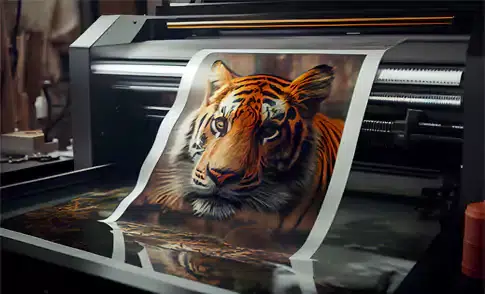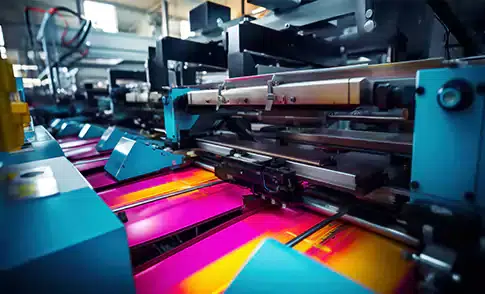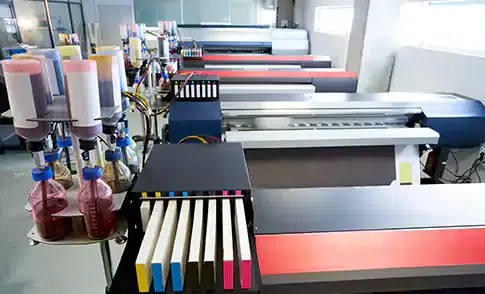Unlocking the Power of Digital Printing: A Comprehensive Guide
Do you want to know about What is digital Printing? So lets start In today’s fast-paced digital age, the realm of printing has undergone a remarkable transformation. Digital printing, once a novelty, has now become an indispensable tool for businesses and individuals alike. In this comprehensive guide, we delve into the intricacies of digital printing, exploring its definition, applications, advantages, and much more. We are going to tell in this article about What is the Digital Printing keep reading until the end.

What is Digital Printing?
Digital printing refers to the process of reproducing digital images or documents directly onto various substrates, such as paper, fabric, or plastic, using digital technology. Unlike traditional printing methods like offset printing, which involve the creation of printing plates, digital printing operates without the need for such intermediaries. Instead, digital files are sent directly to the printer, enabling quick and efficient production of printed materials.
Examples of Digital Printing
Digital printing finds widespread application across various industries, including marketing, advertising, publishing, and packaging. Examples of digital printing include:
- Personalized Marketing Materials: Brochures, flyers, business cards, and promotional posters featuring customized content for targeted audiences.
- Photo Books and Albums: High-quality prints of digital photographs, allowing individuals to preserve cherished memories in tangible formats.
- Labels and Packaging: Customized labels for products, packaging materials, and stickers showcasing vibrant graphics and designs.
- Textile Printing: Direct printing of designs onto textiles, such as t-shirts, hoodies, and tote bags, for personalized apparel and accessories.

Difference Between Digital Printing and Normal Printing
The primary distinction between digital printing and traditional printing methods lies in their processes and capabilities. While digital printing offers advantages such as on-demand printing, cost-effectiveness for small print runs, and customization options, traditional printing techniques like offset printing excel in producing large quantities of prints at lower costs per unit.
Difference Between a Printing Press and Digital Printing
A printing press refers to a mechanical device used in traditional printing methods, such as offset printing, where ink is transferred from a plate to a rubber blanket and then onto the printing surface. In contrast, digital printing eliminates the need for printing plates and directly transfers digital files to the printing substrate using inkjet or laser printing technologies. if you want to get more fast printing services in Abu Dhabi so visit our shop
What is Digital Printing Best For?
Digital printing is best suited for:
- Short Print Runs: Ideal for small to medium print quantities, eliminating the need for costly setup processes associated with traditional printing.
- Customization: Enables personalized printing with variable data capabilities, allowing for unique content tailored to individual recipients.
- Quick Turnaround Times: Offers rapid production and delivery times, making it perfect for time-sensitive projects and last-minute changes.
- Proofing and Prototyping: Facilitates the creation of proofs, prototypes, and samples with minimal setup costs, enabling efficient testing and validation of designs.
Which Printer is Used in Digital Printing?
Digital printing employs various types of printers, including:
- Inkjet Printers: Utilize liquid ink or toner cartridges to produce high-resolution prints on a wide range of substrates.
- Laser Printers: Employ laser technology to fuse toner onto the printing surface, offering fast printing speeds and crisp, professional-quality outputs.
- Direct-to-Garment (DTG) Printers: Specifically designed for printing on textiles, DTG printers apply ink directly onto fabric fibers, ensuring vibrant and durable prints.

Is Digital Printing Easy?
Yes, digital printing is relatively straightforward and user-friendly compared to traditional printing methods. With minimal setup requirements and intuitive printing processes, digital printing offers convenience and accessibility to both beginners and experienced users alike.

Two Main Types of Digital Printing
The two main types of digital printing are:
- Inkjet Printing: Utilizes inkjet technology to create images by propelling droplets of ink onto the printing substrate.
- Laser Printing: Relies on laser technology to generate images by selectively charging a photosensitive drum and transferring toner onto the printing surface.
Conclusion
digital printing represents a dynamic and versatile solution for meeting the diverse printing needs of modern businesses and consumers. Whether it’s producing marketing materials, creating personalized products, or prototyping designs, digital printing offers unparalleled flexibility, efficiency, and quality.
For more insights into digital printing and its applications, be sure to check out Printify’s detailed article on digital printing here.
